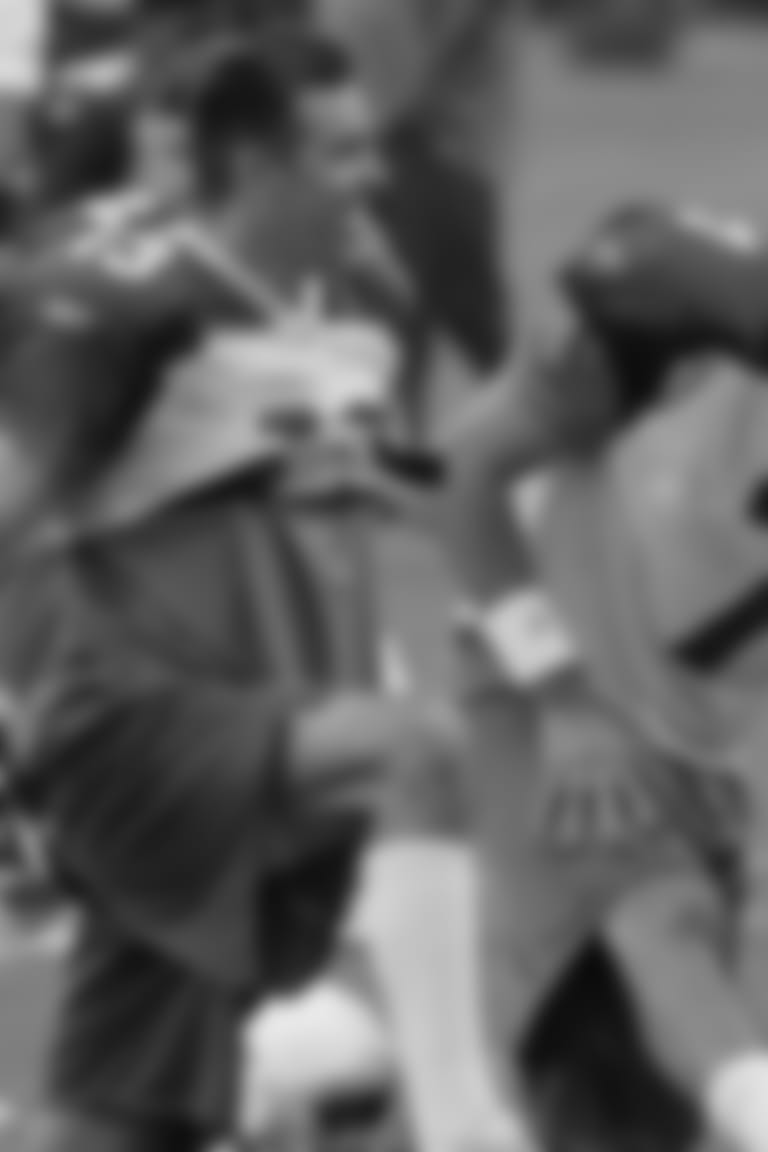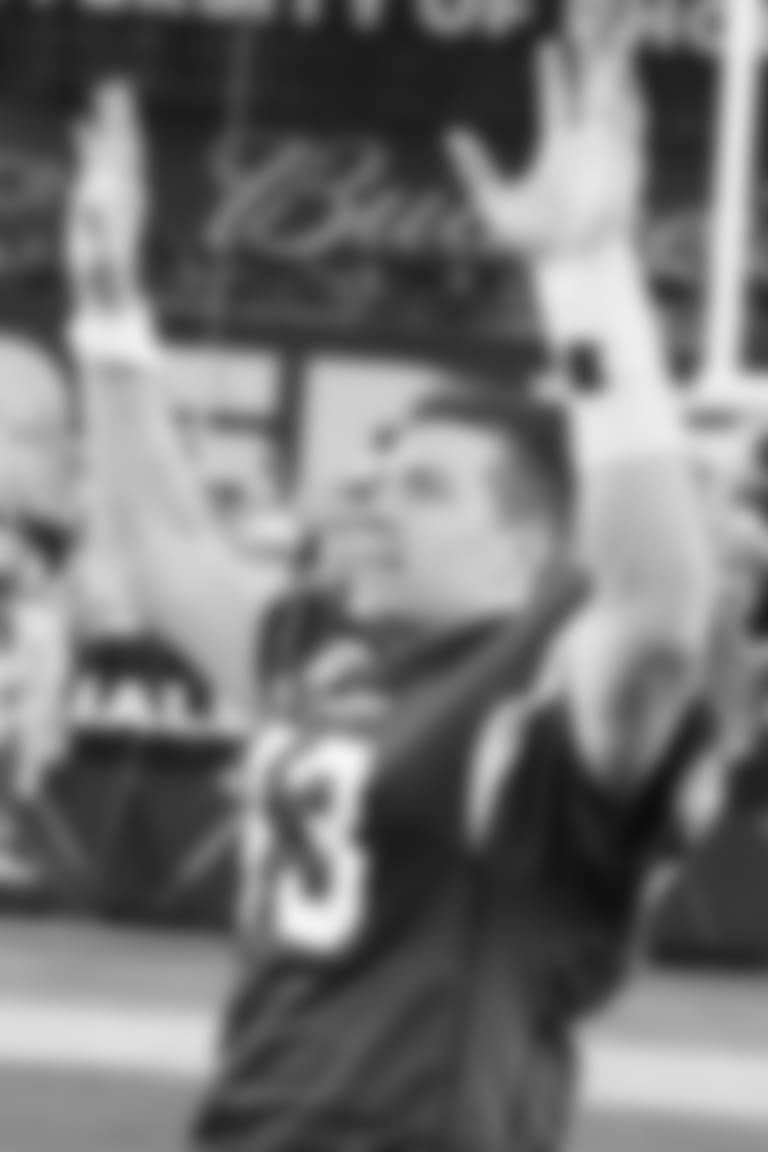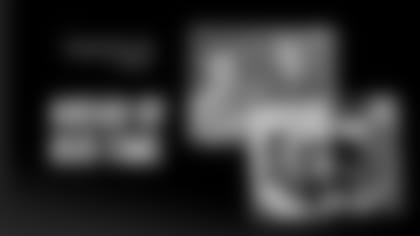The newest episode of Folktales premieres Oct. 12 at 7 p.m. Arizona time on the Cardinals' YouTube channel and on azcardinals.com.
The Cardinals weren't having a good season in 2006, but it allowed rookie first-round quarterback, Matt Leinart, to be put into the lineup as everyone knew he would eventually be.
His backup, Kurt Warner, was considering retirement.
Warner had been an MVP. He had won a Super Bowl. He could still play, he was sure. But if others didn't see it, it didn't make sense to him to stay in the league collecting paychecks. He wasn't built like that.
"Coming to practice every day, believing you're the best player and never getting the chance to play, running scout team after being in the league and winning MVPs and going to Super Bowls, it was mentally exhausting," Warner said. "That's why retirement came to mind.
"That was the most frustrating part of my career."
Warner had just been benched for what would prove to be the final time in his career. He had fumbled 10 times in 3½ games, Leinart had just been a top 10 pick, and the future was calling to the Cardinals even if Warner was just in the first season of a freshly signed three-year contract.
To think that two seasons later, Warner would be setting franchise records and leading the Cardinals to an improbable Super Bowl appearance was, frankly, ridiculous in the moment. Everyone knew the Cardinals were now Leinart's team. No one considered Warner as an option any longer.
Except for Warner – and that belief not only helped him resuscitate his career but paved his way to Canton.
"I went to two Super Bowls and won two MVPs with the Rams," Warner said, "but I still believed I was just as good of a quarterback – if not better – with the Cardinals."
The Cardinals signed Warner in March of 2005, the second of coach Dennis Green's three seasons. Josh McCown was the holdover, but, along with the introduction of the team's new uniforms that spring, they also had a new quarterback.
Warner only signed a one-year deal. He had some interest from the Bears and Lions, but no team was willing to give him a longer-term contract. He was a bridge guy at this point in his career, long past his two MVP seasons with the Rams and a Super Bowl-winning performance. That's what the Giants had done the year before, using Warner for nine games before turning the reins over to rookie Eli Manning.
"As any beat writer at the time, you had lived through the signing of these veteran quarterbacks," said Kent Somers, the Arizona Republic's Cardinals writer at the time. "Boomer Esiason, Dave Krieg, Jim McMahon, Jeff Blake.
"It was like, 'OK, another guy. Kurt Warner.'"
That's not how Warner saw it. But he knew others did.
"Here I am, at this point in my career where nobody expects anything," Warner said. "'He's going into the desert to kind of disappear with the Arizona Cardinals, (and) nobody expected anything from them either.'"
He wasn't healthy all of 2005, but he started all 10 games he played, with 11 touchdowns, nine interceptions and a middling 85.8 passer rating. He was better than McCown. But he wasn't good enough to create confidence in the future.
The 2006 draft was filled with top QB names – Vince Young, Matt Leinart, Jay Cutler. The Cardinals had the 10th pick, and Warner was aware of the circumstances. He lobbied for himself both privately and publicly, certain that if the team used that high pick on another position, he was the quarterback that could help the franchise turn the corner.
The team signed high-profile free-agent running back Edgerrin James. They were moving into a brand-new stadium in Glendale after years outside in the heat at Sun Devil Stadium.
When Leinart was on the board, the Cardinals made the pick immediately, without using much of the allotted 15 minutes. GM Rod Graves had a phone conversation with Warner after the pick, and said Warner was ready to work with the young QB. Green told Leinart his availability had been a "gift from heaven."
Warner couldn't see it that way.
"When we drafted Matt, that was the first thing that went through my mind," Warner said. "Is this it for me? Will I even get the chance to compete?"
There was no competition needed. Not that first season, not how Green viewed it.
"Denny Green wanted Matt Leinart to learn behind Kurt Warner," Somers said. "He thought Kurt would be a good influence."
Warner, who had signed a three-year contract with the Cardinals a month earlier, took over the starting job. Green said he wanted Leinart to sit all season, and Warner was excellent in the opener against the 49ers in the brand-new then-University of Phoenix Stadium, throwing three touchdowns in a win and taking home NFC offensive Player of the Week honors.
Then it got sideways. Warner, behind a struggling offensive line, ended up with 10 fumbles in the first three-plus games of the season. In Week 3, the Cardinals were down two with less than two minutes in the game when they miraculously recovered a Rams' fumble in short field-goal range.
Warner fumbled away the snap. It turned out right guard Milford Brown had hit the ball as he came out to pull to the left on a running play, but in real time it looked like the over-the-hill QB had fumbled on his own yet again. Moments later, when the game had ended, Warner jogged to the locker room while being booed by the home fans.
It was another symptom of a team that wasn't good enough, one that ultimately lost eight straight and changed coaches at the end of the season.
"I got booed out of the stadium," Warner said. "It was really, really hard. Because it wasn't just about me. It's never just about one player. I knew what I was doing and what I wasn't doing and why I was doing it. That's what makes it so hard, is when nobody else knows. You've got to just accept it."
It was in Atlanta the next week when the Cardinals got blown out, Warner threw a pick-6 and fumbled twice more (losing one), that Green finally turned to Leinart.
And in the postgame radio interview, while Leinart was saying he didn't know what would happen the following week, Green showed up and grabbed the microphone.
"Matt is our starter," Green said theatrically.
Warner, immediately, contemplated retirement. It was the third time he had been displaced by a younger QB. There were only so many chances he could expect to have.
"That was the hardest part of my entire journey was believing what I was capable of, knowing inside how good I still was, what I still had to offer, and not getting the opportunity to do it," Warner said.

















